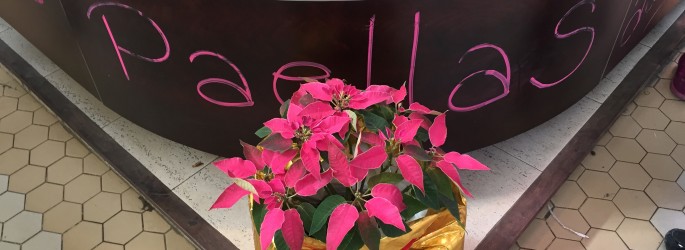The Rice Is Right: Why Everything You Know About Paella Is Probably Wrong
Written by Jaillan Yehia
It shouldn’t be bright yellow, or fluffy, it isn’t intended for dinner and it’s not supposed to be synonymous with seafood. In fact, technically it’s not even a Spanish dish.
Even though the first food that springs to mind when you think of Spanish cuisine is probably paella, the dish has been bastardised beyond all recognition to a point where it’s about as authentic to the original as a McFlurry is to a gelato.
So here are 5 fast facts you didn’t know about real Valencian paella – so you can call yourself a true paella perfectionist…
Until my recent trip to Valencia I really thought I didn’t like paella.
That’s because until you’ve had Valencian Paella in the very city where it was invented, you really haven’t had paella.
Yes, I know, it’s all very well saying that, but take my word for it; those large fluffy pans of bright yellow soft rice punctuated by mussels and chunks of other fish just aren’t paella. And the best news is that the real thing tastes absolutely amazing.
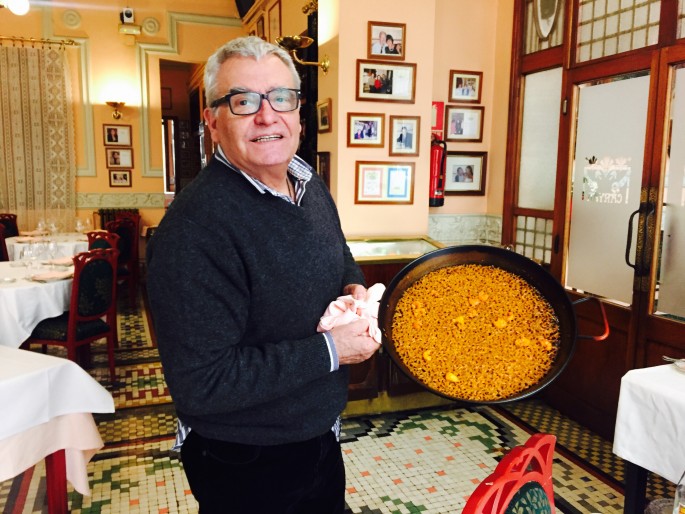
Miguel Segue of El Canyar shows what a proper pan of Valencian Paella should look like
So here are 5 unforgettable facts I learned about proper paella from a restaurant owner who’s been serving it to everyone from Yoko Ono to Daniel Craig for the last 30 years (with the same chef at the helm for 28 of them).
What Does This Post Cover?
1.Thin for the win
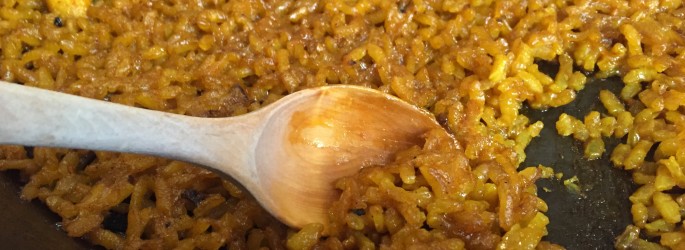
A few grains of rice coat the bottom of the pan – that’s paella
If you’re only going to learn one thing about authentic Valencian paella, make it this: overflowing pans of paella are a tell-tale sign you’re in a tourist trap.
It may look good but those big paella dishes just aren’t authentic. The most important thing is not that the finished dish looks pretty but that the paella is tasty – and for the rice to soak up all the flavour of the broth you should only end up with a very thin coating of rice about an inch or so thick on the bottom of the pan.
I’ll admit that when I first saw this I actually thought the paella was burned – but the taste is a world away from the usual dish that’s passed off as paella and once you’ve had this you will never go back.
2. If it’s the colour of sun, it’s no fun
Likewise the sunshine yellow of the rice you see isn’t authentic – it takes a long time to cook paella, around 2 hours, ideally over a fire, and after this length of time you’re looking for a lovely caramel brown colour that’s a hint to the sealed in smoky flavours, and those crustier, crispier, darker-brown flakes are, if we are going to keep the gelato analogy going, as prized as the cookie dough you mine from your pint of Ben & Jerry’s.
3. No Need For Fishy In This Dishy
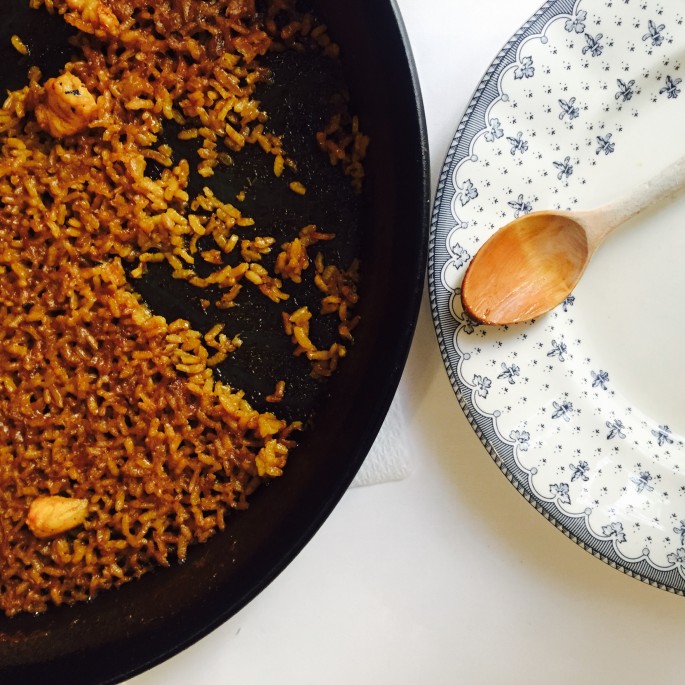
Valencian Paella wasn’t always served with seafood
Traditional Valencian paella should be with made with duck or rabbit, maybe chicken or snails but despite the fact that it has become totally synonymous with it, not usually with seafood.
4. Sunday = Funday
Valencian Paella is a lunchtime food, ideally eaten with family and friends on the weekend, or when you have time for a leisurely lunch, making it much like an English Sunday roast: a food to be cooked slowly, and enjoyed at just such a pace. Imagine if a tourist came to England and tried to order roast beef and Yorkshires on a Tuesday night for dinner. Exactly.
5. It’s The Ratio of Rice that makes IT Nice
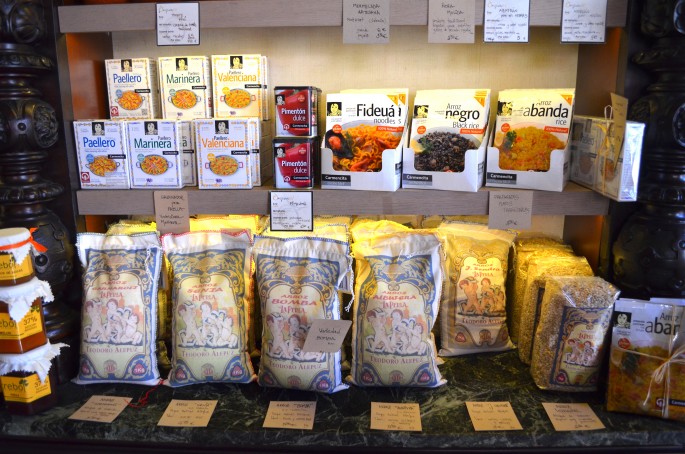
Traditional Albufera rice on sale in Valencia
I learned that Valencians have 40 different ways of cooking rice – and as an Egyptian I can relate to this. Miguel Segue goes on to explain something which I believe to be the first rule of rice cooking: that the most important thing is getting the correct ratio of rice: liquid: time from the start (as well as using the right type of rice, which is a whole other subject in itself).
In the case of paella the liquid has all the flavour and the name of the game is getting all that yumminess inside the rice, which takes experience.
Above all I learned that paella has it’s own very specific rules. Valencia is the birthplace of paella – and Valencia is in Spain, yes (in fact it’s the country’s third biggest city) but because Spanish food is highly regional unless you’re in Valencia or near Lake Albufera you really shouldn’t even be thinking about ordering paella.
Savoirthere visited Valencia as part of The Travel Mob project in association with Valencia Tourism – you can follow the project on social media and learn more about Valencia via the hashtag #VivaValencia
Tags: food, Paella, Spain, Valencia
Trackback from your site.

